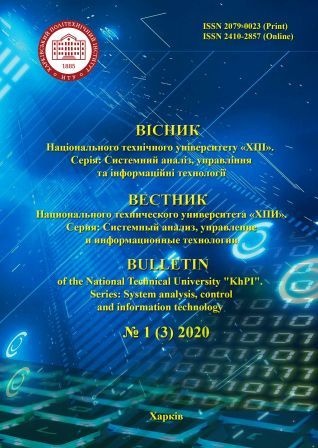ANALYSIS OF SYSTEMS OF MODELING OF MICROCONTROLLERS WITH ADDITIONAL MODULES OF CRYPTOGRAPHIC INFORMATION PROTECTION
DOI:
https://doi.org/10.20998/2079-0023.2020.01.14Keywords:
modeling, microcontrollers, microprocessor system, cryptographic information protection, cybersecurity, Proteus, Multisim, TINAAbstract
The field of application of the protected microprocessor systems includes information security functions: authentication of subjects and objects of information interaction, information encryption, integrity control, access control, key management. Today, the urgent task is to establish the security of microprocessor-based systems using a variety of computer simulation software environments. The work analyzes the most effective and affordable computer simulation programs for microprocessor systems and gives practical recommendations for their use. It has been shown that the most powerful computer-aided design system is the Proteus software suite which allows simulating virtually the operation of various microprocessor devices with support for several microcontroller families from different manufacturers. The main advantages include: performing all stages of development in a single environment; the ability to write, debug, and test firmware, generate diagnostic messages to find programming errors; accelerating the development of a microprocessor device; support for interoperation of hardware devices that are connected through a computer port. Using Multisim in the educational process makes it possible to: review and change the status of the register content, program memory and data, stack cells and bit configuration; visualize the result of the execution of a single command or a program as a whole; demonstrate the practice of joint use of languages C and Assembler in one project in order to optimize the program; to study the basics of operation and features of peripheral devices functioning. However, the limited set of microcontrollers in the Multisim program imposes significant restrictions on the possibility of using it for development of real projects. The computer simulation program TINA has a russified interface that is much easier compared to the Proteus with an ability to enter all the information about the created project into one file. Compared to Multisim, the TINA library contains significantly more microcontroller models, and the built-in programmer allows modifying programs and observing the results.References
Sovyn Ya., Nakonechny Yu., Opirskyy I., Stakhiv M. Analysis of hardware support of cryptography in Internet of Things-devices. Ukrainian Scientific Journal of Information Security, 2018, vol. 24, issue 1, p. 3648.
Alekhin V. Development of a training complex in electrical engineering, electronics and microcontrollers with modeling in the TINA software environment. Open education. 2017, no.6, pp. 5769.
Alekhin V. A. Electrical Engineering and Electronics. Training resources for students and teachers. URL: http://www.toe-mirea.ru/ (accessed 02.02.2020).
Bereznyakov S., Grekov A. Modeling of the microcontroller 80С51 in the system of circuit simulation Proteus VSM. Electrical engineering, information technology, control systems. 2016, no. 17, pp. 104120.
Matveenko I. Computer simulation of electronic circuits based on AVR microcontrollers. Scientific Bulletin of the National University of Life and Environmental Sciences of Ukraine. Series: APC Engineering and Energy. 2014, issue 194 (2), pp. 3946.
Filatov M. Working with AVR Microcontrollers in Proteus 8.1. Components and technologies. 2015, no. 12 (173), pp. 103112.
Makarenko V., Babko A. Modeling the operation of microcontrollers in the NI Multisim program. Electronic components and systems. 2012, no.4, pp. 3843.
Naidenko E. Application of the NI Multisim software environment in the study of the discipline «Microprocessor Technology». Electrotechnical and computer systems. 2017, no. 25, pp. 465469.
Kolesnikova T. Microcontroller programming in NI Circuit Design Suite - Multisim 12.0 software environment. Components and technologies. 2014, no. 6 (155), pp. 144148.
Liashenko O., Zhurilo O. Simulation of possible information security threats in systems using AVR microcontrollers. Global Cyber Security Forum: Proceedings of the First International Scientific and Practical Forum, November 1416, 2019. Kharkiv: KNURE, 2019, pp. 6869.
Kvashnin, V.O., Babash A.V., Kvashnin V.V. Programming and Application of STM32F4Discovery Microcontrollers: Monograph. Kramatorsk: Center for Printing House, 2017. 143 p.
TinaCloud. URL: http://www.tinacloud.com (accessed 02.02.2020).
Downloads
How to Cite
Issue
Section
License
Copyright (c) 2020 Bulletin of National Technical University "KhPI". Series: System Analysis, Control and Information TechnologiesAuthors who publish with this journal agree to the following terms:
- Authors retain copyright and grant the journal right of first publication with the work simultaneously licensed under a Creative Commons Attribution License that allows others to share the work with an acknowledgement of the work's authorship and initial publication in this journal.
- Authors are able to enter into separate, additional contractual arrangements for the non-exclusive distribution of the journal's published version of the work (e.g., post it to an institutional repository or publish it in a book), with an acknowledgement of its initial publication in this journal.
- Authors are permitted and encouraged to post their work online (e.g., in institutional repositories or on their website) prior to and during the submission process, as it can lead to productive exchanges, as well as earlier and greater citation of published work (See The Effect of Open Access).


